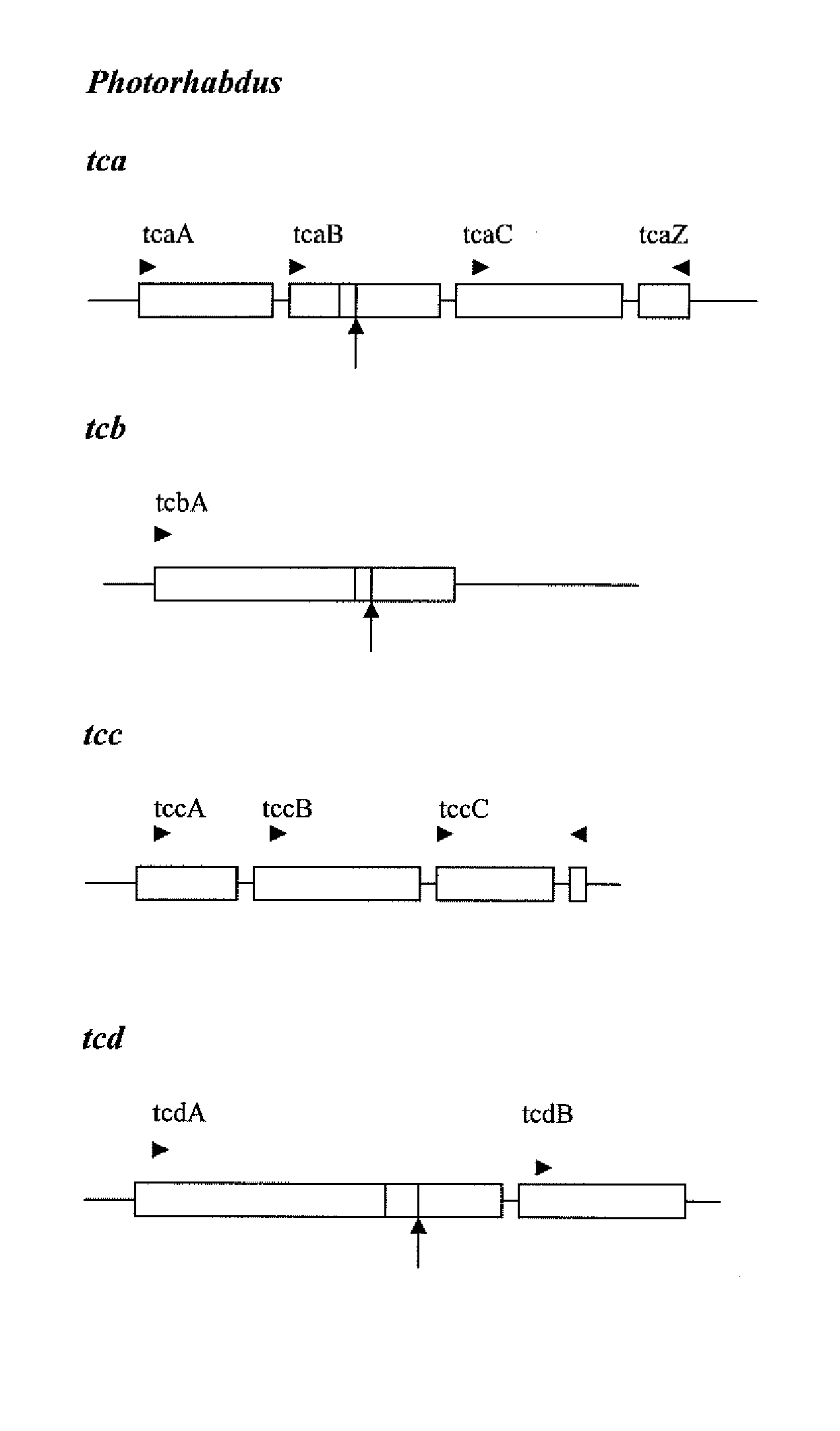Pesticidally Active Proteins and Polynucleotides Obtainable from Paenibacillus Species
a technology of paenibacillus and active proteins, which is applied in the field of paenibacillus active proteins and polynucleotides, can solve the problems of reducing crop quality, crop loss, and the cost of keeping pests under control, and reducing crop yield, so as to facilitate the entry of vegetative cells and high numbers
- Summary
- Abstract
- Description
- Claims
- Application Information
AI Technical Summary
Benefits of technology
Problems solved by technology
Method used
Image
Examples
example 1
Isolation and Discovery of Insecticidal Activity of DAS1529 as a Paenibacillus Sp.
[0226] A bacterial strain, designated DAS1529, was found to produce factors that were growth inhibitory to neonates of lepidopteran insects, corn earworm (Heliothis zea; CEW), tobacco budworm (Heliothis virescens; TBW), and tobacco hornworm (Manduca sexta; THW).
[0227] DAS1529 was cultured in 2% Protease Peptone No. 3 (PP3) medium (Difco Laboratories, Detroit, Mich.) supplemented with 1.25% NaCl or in JB medium supplemented with 0.2% glucose. Bacterial culture was grown at 25° C. for 40 hours at 150 rpm.
[0228] The insecticidally active factors were initially found in the fermentation broth that was concentrated on 5 kDa molecular weight cutoff filters. Those factors were heat labile (inactivated by heating at 85° C. for 20 minutes). These data indicated that the factors were proteinaceous. See also end of Example 4.
[0229] To identify active factors in cell pellets, the bacterial culture was centrifu...
example 2
Classification of DAS 1529
[0230] Molecular phylogeny was performed to determine the taxonomic affiliation of strain DAS1529. The nucleotide sequence of the 16S rDNA of DAS 1529 was determined and used for similarity and phylogenetic analyses (using the MicroSeq Kit from ABI). The sequence is provided as SEQ ID NO:16. BLAST search results are as follows:
Core(bits)E valuegi|15395282|emb|AJ320490.1|PTH320490Paenibacillus thiamino . . .29060.0gi|3328014|gb|AF071859.1|AF071859Paenibacillus popilliae s . . .28340.0gi|3328015|gb|AF071860.1|AF071860Paenibacillus popilliae s . . .28150.0gi|2769591|emb|Y16129.1|PS16SC168Paenibacillus sp. C-168 1 . . .26990.0gi|2769590|emb|Y16128.1|PS16ST168Paenibacillus sp. T-168 1 . . .25090.0gi|2077917|dbj|D78475.1|D78475Paenibacillus25030.0thiaminolyticu . . .gi|3328016|gb|AF071861.1|AF071861Paenibacillus lentimorbus . . .24930.0gi|2895560|gb|AF039408.1|Bacillus tipchiralis 16S24930.0ribosoma . . .gi|2077936|dbj|D88513.1|D88513Paenibacillus24930.0thiami...
example 3
[0235] Two insect bioassay methods were used to obtain results presented below. A 96-well format and a 128-well format were used for primary screening for activity against lepdidopteran insects. A 24-well diet incorporation format was used to determine specific activity (LC50s) of the toxin.
[0236] For the 96-well format, artificial diet was dispensed into 96-well microtiter plates. Each well measured approximately 0.32 cm2 and contained 150 μl artificial diet. Samples / toxins were applied at a rate of 50 μl / well for fermentation broth, cell pellets, and purified toxins. Positive control (Cry1Ac) at appropriate doses and negative controls (water, medium blank, bacterial host strains not expressing target toxin) at top dose were included. Samples were allowed to dry for approximately 1-3 hours so that the samples lost their moisture but the diet retained its moisture. Either insect eggs were dispersed onto the surface of the sample treated diet, or a single...
PUM
| Property | Measurement | Unit |
|---|---|---|
| Temperature | aaaaa | aaaaa |
| Temperature | aaaaa | aaaaa |
| Temperature | aaaaa | aaaaa |
Abstract
Description
Claims
Application Information
 Login to View More
Login to View More - R&D
- Intellectual Property
- Life Sciences
- Materials
- Tech Scout
- Unparalleled Data Quality
- Higher Quality Content
- 60% Fewer Hallucinations
Browse by: Latest US Patents, China's latest patents, Technical Efficacy Thesaurus, Application Domain, Technology Topic, Popular Technical Reports.
© 2025 PatSnap. All rights reserved.Legal|Privacy policy|Modern Slavery Act Transparency Statement|Sitemap|About US| Contact US: help@patsnap.com



